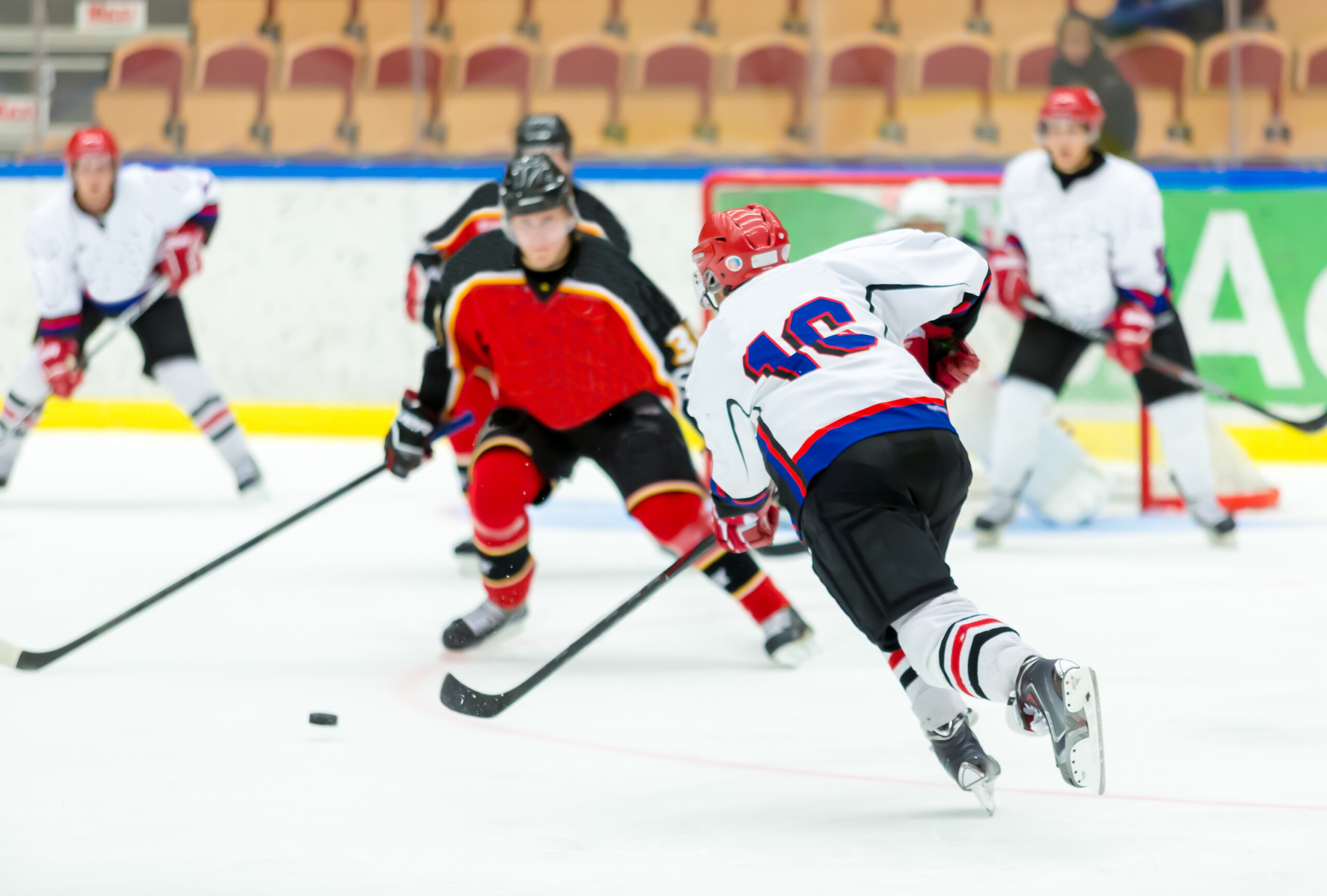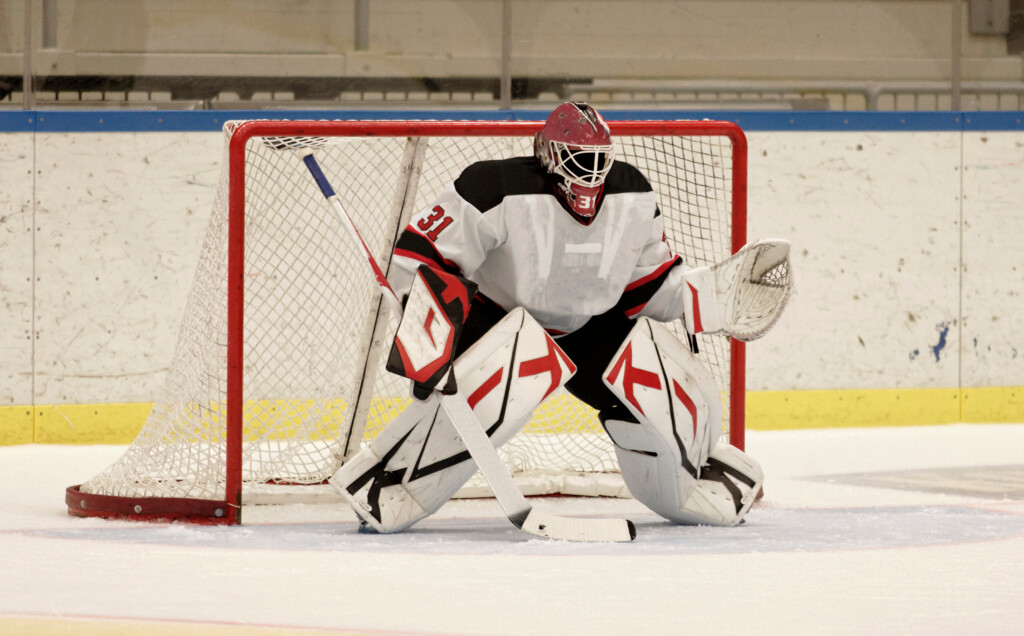Identification of “sleeping” talent in elite ice-hockey using psychological characteristics
April 3, 2024
In sports, some athletes currently under-perform compared to others, but end up excelling later in life, while some who currently perform well, end up under-performing later on. In other words, current performance is not necessarily a good predictor of potential in sports.
This makes it a major challenge for scouts, who are responsible for spotting young talent and predicting who will succeed at higher levels of competition, to identify and predict future success based only on current performance. Many successful athletes were not recognized early on but ended up excelling and exceeding expectations, making them ‘sleepers’ in sports terminology. While this type of overlooked talent has drawn attention in media and some theoretical work, there’s been little scientific research on sleepers.
The players and parameters
Our study included 95 male junior elite ice-hockey players aged 15 or 16 years old. They all played in one of the 3 highest levels possible for their age in Canada and were all eligible for the 2019 yearly draft of a Major Junior league in Canada. Among this group, 70 players were drafted after the second round (37th or later). Three years later, professional scouts identified 15 of those players as sleepers. Tests were done on the players’ personal characteristics, their ability to manage their learning, and their hockey-specific skills like anticipation, decision-making, and eye-movements while watching video sequences. This study was done with the Québec Remparts.
Insights into sleepers
This study is the first to focus on sleepers, showing it’s possible to identify them by looking at self-regulation and perceptual-cognitive skills. Understanding sleepers can help teams find valuable players that scouts may overlook. We found that sleepers had better planning skills and different eye movements when watching videos. These traits helped us identify sleepers accurately among late-drafted players.
These results provide insights into these highly sought-after sleepers who are often overlooked by scouts, but who defy the odds and provide value to teams able to identify them. We hypothesized that sleepers would have better reflection abilities, better decision-making, and distinct gaze behaviours when watching video clips; which were partially confirmed.

The findings show that a combination of those psychological characteristics was strikingly successful in identifying sleepers among late-drafted players. A combination of planning abilities and eye movements correctly identified 12 of 15 sleepers, while only identifying 8 of 55 other late-drafted players as sleepers. Later analysis revealed that almost all sleepers (14 of 15) belonged to a sub-population of players with higher self-regulatory skills. This is in line with other studies that found differences in self-regulatory and perceptual-cognitive skills between groups of athletes, with our study extending this by revealing similar findings within athletes with a very similar skill level. This suggest that athletes’ psychological profiles, even when measured within 45 minutes, may be a promising indicator of potential when identifying future talent.
Our predictive model was surprisingly successful in identifying sleepers. Better planning abilities and distinct eye movements (that is, more Areas of Interest (AOIs) fixated and fewer fixations) predicted 40% of the variance and correctly classified almost 85% of the late-selected players when sleepers were identified by experienced scouts. These results support the idea that psychological characteristics hold promise for talent identification. This could be even more true when trying to identify sleepers, as players selected later in a draft are often considered to be physically and technically similar, leaving psychological characteristics as one of the few ways to differentiate those players.
One surprising finding is that birth month didn’t affect sleepers as it did other players. This suggests an over-representation of those born later in the selection year amongst the group of sleepers. Usually, coaches favour players born soon after the cut-off date, thinking they’re more talented due to their physical maturity. But among sleepers, birth month didn’t matter much. We found two groups among late-drafted players, mainly based on their self-regulation skills. This approach was surprisingly successful in identifying sleepers: the group with higher self-regulatory skills included a much larger proportion of sleepers.
Strengths and limitations
A key strength of this study was our use of a cognitive and quantitative approach to assess talent in ice hockey drafts. However, the results might not apply to other contexts like women’s hockey or selections for the NHL at 18. Also, players’ development at 15 isn’t complete, so traits for success may change over time.
Conclusions
The main findings of the study were that psychological characteristics, especially gaze behaviour and self-regulation skills, predicted high achievement 3 years later among late-drafted ice-hockey players. This suggests scouts could use psychological profiles to make better selections, especially in later rounds of drafts.
The next steps will be:
- linking the psychological components (data collected at younger age) to data in games several years later (and eventually to link these components to very long-term success).
- a survey of lateral preference in ice hockey
- a study of the development of laterality in ice hockey.
- a study of temporal expertise of ice hockey players.
Funding acknowledgement: This blog draws on research supported by the Social Sciences and Humanities Research Council and Sport Canada as part of the Sport Participation Research Initiative.
About the Author(s)
Simon Grondin began his career at Université Laurentienne, where he worked for eight years before joining the teaching staff at the Université Laval in the École de psychologie in 1996. His research focuses on psychological time. He was editor-in-chief of the Canadian Journal of Experimental Psychology (2006-2009) and associate editor of Attention, Perception and Psychophysics (2006-2015) and Canadian Psychology (2003-2006). In 2016, the Société Québécoise pour la Recherche en Psychologie awarded him the Prix Adrien-Pinard in recognition of his outstanding contribution to psychological research.
The information presented in SIRC blogs and SIRCuit articles is accurate and reliable as of the date of publication. Developments that occur after the date of publication may impact the current accuracy of the information presented in a previously published blog or article.
